Posts Tagged ‘IT’
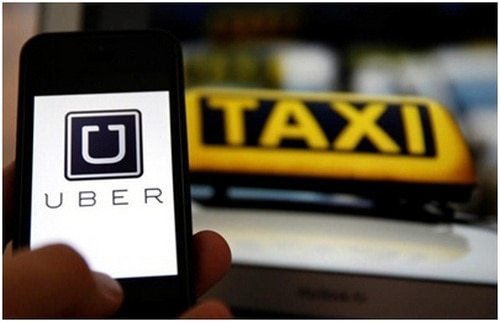
Uber segmentation, targeting and positioning can be specified as the essence of Uber marketing strategy. Segmentation involves dividing population into groups according to shared characteristics, whereas targeting implies choosing specific groups identified as a result of segmentation to sell products. Positioning refers to the selection of the marketing mix the most suitable for the target customer segment. Uber uses the following positioning methods: 1. Multi-segment positioning. Uber uses multi-segment type of positioning and accordingly, targets several customer segments with different levels of service. The ride-hailing giant offers economy services such as Uber X, Uber XI and Uber Pool for cost-conscious customers. At the same time, Uber PREMIUM consisting of fleet of stylish vehicles is available for customers who don’t mind to pay more. 2. Stop-gap positioning. Stop-gap positioning involves investing in currently unprofitable brands with profitability expectations in long term-perspective. Uber used this positioning method for its Advanced Technologies Group (ATG) business unit. Specifically, the ride-hailing giant invested hundreds of millions of USD in the development of autonomous self-driving cars. However, the project did not generate expected results and ATG unit was sold to Aurora Innovation Inc. in January 2021. The following table illustrates Uber segmentation, targeting and positioning: Type of segmentation Segmentation criteria Uber target customer segment Uber X, Uber XI, Uber pool, Uber-MOTO, Uber AUTO Uber Premium, Uber Go, UberEATS, Uber BOAT, UberRUSH Uber Access Geog-raphic Region North & South America, Asia, & New Zealand Australia, Europe, Africa Uber AUTO – Bangalore and Pune Only North & South America, Asia, & New Zealand Australia, Europe, Africa North & South America, Asia, & New Zealand Australia, Europe, Africa Density Urban/rural Urban/rural Urban/rural Demog-raphic Age 18+ 25-65 45-65 Gender Males & Females Males & Females Males & Females …
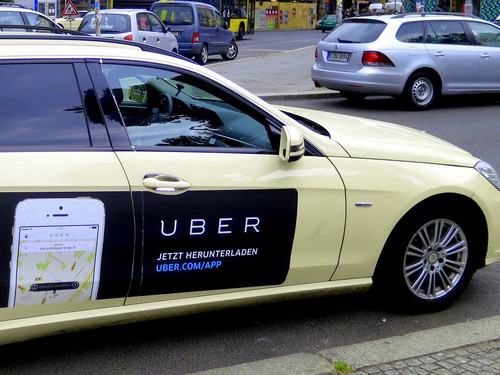
Uber marketing strategy integrates print and media advertising, sales promotions, events and experiences, public relations and others. Particularly, Uber marketing strategy is mainly based on the word-of-mouth. Moreover, media in general and social media in particular play instrumental roles in terms of increasing the levels of Uber brand awareness in the global scale. At the same time, it is important to note that during the past few years, Uber-related messages communicated by the media have been mainly focused on scandals involving Uber, thus damaging the company’s brand image. Uber sales and marketing costs amounted to USD 3,58 USD 4,63 and USD 3,15 billions in 2020, 2019 and 2018 respectively.[1] Uber’s “rider-focused ad spend has increased twentyfold in the last year and a half.”[2] However, Chief Operating Officer Barney Harford has announced his plans to decrease marketing expenses as part of his attempts “bring a dose of financial discipline.”[3] Uber 7ps of marketing focuses on product and price elements of the marketing mix to a greater extent compared to other elements. Specifically, the global transportation technology company is increasing the range of its services to target greater numbers of customer segments. At the same time, the majority of Uber services are cheaper than traditional taxi, illustrating company’s focus on cost element of the marketing mix. Uber’s unique selling proposition is associated with cost efficiency, increasing service range and high level of customer convenience. Particularly, customers greatly appreciate convenience aspect of Uber value proposition. Accordingly, the global transportation technology company targets wide customer segment in terms of geographical location, age, social status and other criteria. Uber Technologies Inc. Report contains the above analysis of Uber marketing strategy. The report illustrates the application of the major analytical strategic frameworks in business studies such as SWOT, PESTEL, Porter’s Five Forces, Value Chain…
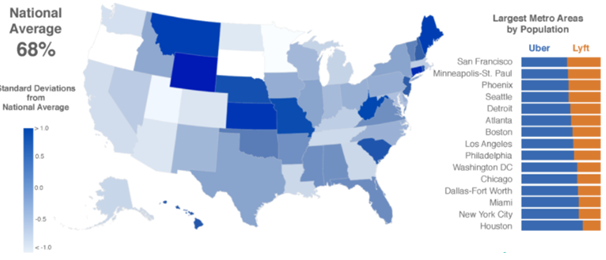
SWOT is an acronym for strengths, weaknesses, opportunities and threats related to organizations. The following table illustrates Uber SWOT analysis: Strengths 1. First mover advantage and global market leadership 2. Low operational costs 3. Effective implementation of ‘Think Global, Act Local’ strategy 4. Uber ecosystem 5. High levels of user convenience Weaknesses 1. Damaged brand image due to a series of various scandals 2. Increasing losses of the business 3. Uber business model is easy to imitate 4. Only technically savvy individuals can use Uber services 5. Low earnings by Uber drivers Opportunities 1. Increasing popularity of sharing economy 2. Self-driving cars 3. Improving brand image through CSR programs and initiatives 4. Increasing internet penetration in the global scale 5. Increasing service range Threats 1. More legal actions in certain countries to ban Uber from operating 2. Further intensification of competition 3. The risk of new scandals and ethical issues 4. Growing protests and retaliations from traditional taxi services 5. Drivers leaving Uber due to low earnings Uber SWOT analysis Strengths in Uber SWOT Analysis 1. Uber is the largest global taxi technology company in the world and it has a first mover advantage in the ride-hailing segment in the global scale. The company has effectively utilised its fist mover advantage to build momentum and achieve global expansion in a short period of time. Moreover, thanks to first-mover advantage, the word Uber has become synonym for ride-haling internationally and the new term uberisation has emerged describing commodisation of various services. Uber is an undisputed market leader in ride-haling the global scale. The largest mobility platform in the world has more than 93 million monthly active riders in approximately 10000 cities worldwide. As illustrated in figure below, Uber is much more popular than its closest rival Lyft in the largest…
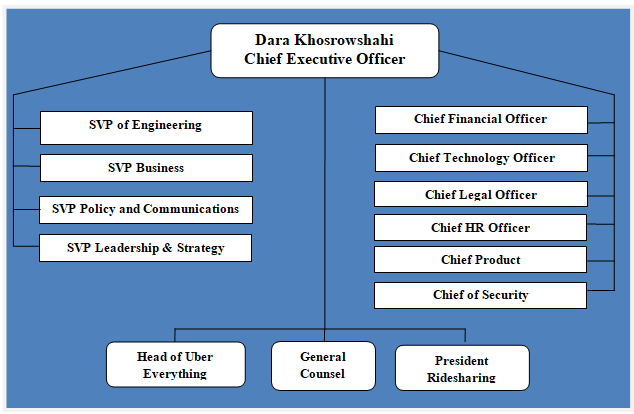
Uber organizational structure has been traditionally highly hierarchical with co-founder and former CEO Travis Kalanick yielding tremendous power and micromanaging the ride-hailing giant. Lack of Kalanick’s leadership skills resulted in a series of scandals involving bullying, discrimination at workplace, sexual harassment etc. Kalanick had to resign as a result of these scandals. After Dara Khosrowshahi became new CEO in 2017, Uber organizational structure has been subjected to certain changes.[1] Figure below illustrates Uber organizational structure: Uber Organizational Structure It can be argued that the current pattern of Uber’s organizational structure illustrated in Figure 1 above can be subjected to more changes by new CEO Dara Khosrowshahi in the medium-term perspective. Demoralized workforce and poor organizational culture belong to the list of major issues for the global transportation technology company. Dara Khosrowshahi is credited for creating collaborative work culture at Expedia where employees are encouraged to propose their ideas to management. Mr. Khosrowshahi is attempting to fix Uber organizational culture as part of his grand plans to turnaround the business. Accordingly, improvement in organizational culture may necessitate changes in organizational structure. Specifically, de-layering of organizational structure may be introduced, removing certain levels of management in order to make the business more flexible to respond to the changes in external marketplace. Moreover, advantages of flat organizational structure include faster speed of communication between the top management and floor-level employees. Senior leadership reorganization initiated by CEO Dara Khosrowshahi due to failed IPO in 2019 the roles of chief operating officer (COO) and chief marketing officer (CMO) were eliminated. Specifically, COO role was replaced by two executives who manage biggest businesses – ride-haling and food delivery. These two executives directly report to Khosrowshahi. Uber marketing operations, on the other hand, were combined with communications and policy departments. The rationale behind this specific change was…
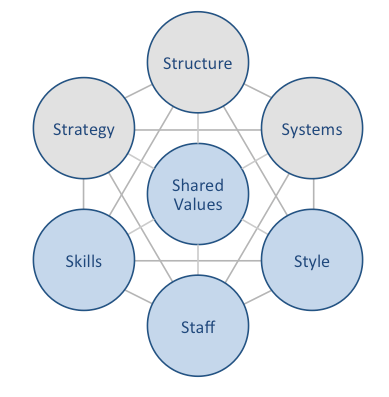
Apple McKinsey 7S model illustrates the ways in which seven elements of businesses can be aligned to increase effectiveness. According to this model, strategy, structure and systems represent hard elements, whereas shared values, skills, style and staff are soft elements. McKinsey 7S framework stresses the presence of strong links between elements in a way that a change in one element causes changes in others. As it is illustrated in figure below, shared values are positioned at the core of Apple McKinsey 7S framework, since shared values guide employee behaviour with implications in their performance. Apple McKinsey 7S model Hard Elements in Apple McKinsey 7S Model Strategy Apple pursues differentiation business strategy with a particular focus on the design and advanced features and capabilities of products. The company aims to benefit from the first mover advantage to a maximum extent as it was the case with introduction of iPod, the first device of its kind that stored thousands of songs with simple shuffle capabilities through songs and the development of Macintosh, the first computer to use a graphical user interface. Accordingly, Apple products and services are generally more expensive compared to the competition. Moreover, Apple business strategy involves the creation of a sort of closed ecosystem, where it’s various devices and software sync easily and work well with each other. Advantages the company gains from this strategy include high switching costs for customers and this provides the opportunities to leverage relationships with existing customers to offer other products and services. Furthermore, the multinational technology company has developed a strategy to reduce dependence of the business on the sale of iPhones. This strategy involves putting greater emphasis on services divisions of the business and more investments on research and development of new products and services. The iPhone maker has also specified…
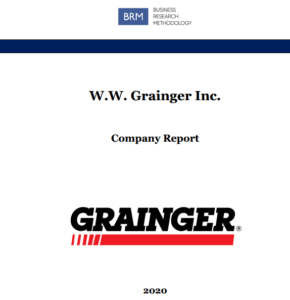
Founded in Illinois, US in 1928, W.W. Grainger Inc. is a B2B distributor of maintenance, repair and operating (MRO) products and services. The global industrial supply company has more than 3,5 million customers and about 25000 employees worldwide. (Fact Book, 2020). The global MRO products distributor works with approximately 5000 suppliers internationally. In 2019 Grainger generated revenues of USD 11,2 billion, 3% increase compared to the previous year (Annual Report, 2019). Grainger pursues differentiation business strategy. Specifically, the B2B distributor differentiates on the basis of products, offering the widest range of MRO product categories. Grainger’s use of differentiation business strategy also extends to differentiated sales and services. The company delivers its products with high level of speed and convenience and employs highly qualified sales representatives with deep technical knowledge. Grainger has hierarchical organizational structure and its organizational culture is based on diversity and inclusiveness and value for technology and innovation. Moreover, focus on teamwork can be highlighted as one of integral components of Grainger organizational culture. Business development strategy for the B2B distributor integrates market penetration, product development and market development strategies. The industrial products distributor immensely benefits from the economies of scale and the company has an extensive experience and knowledge in selling MRO products. At the same time, Grainger has certain weaknesses that can have negative implications on long-term growth prospects of the business. High level of indebtness is a major issue for the company and as of December 2019, Grainger’s consolidated debts amounted to USD 2,4 billion. Moreover, with total 72% of revenues generated in the US in 2019 (Fact Book 2020), the B2B distributor is over-dependent on the home market in the US. W.W. Grainger Inc. Report contains the application of the major analytical strategic frameworks in business studies such as SWOT, PESTEL, Porter’s Five Forces,…
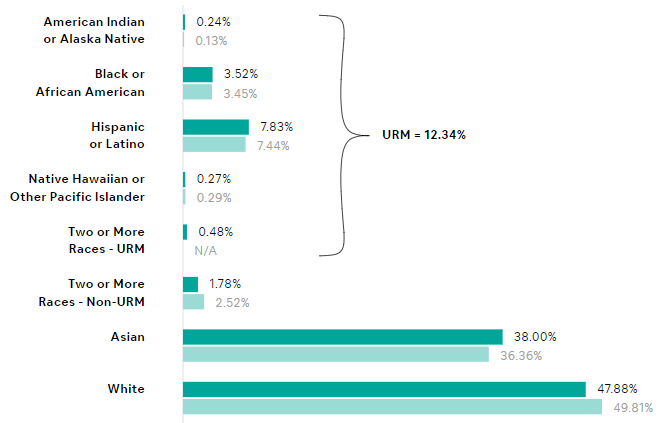
Airbnb corporate social responsibility is closely associated with business model of the travel industry disruptor. It can be argued that travelling via Airbnb instead of hotels results in significant reduction in energy and water use, greenhouse gas emissions, and waste, and encourages more sustainable practices among both hosts and guests. CSR Programs and Initiatives Airbnb Supporting Local Communities Airbnb employees receive four hours of paid time off every month to volunteer in their local communities.[1] Global Citizenship Champion program launched in 2013 involves organizing charitable contributions to causes important to their local communities in 20 cities around the world Champions within the scope of Global Citizenship Champion program completed more than 17000 hours of service in 2016. Airbnb runs Open Homes program that provides homes for free to those affected by conflict, disaster, or critical illness. The program has helped more than 25,000 people in need to find temporary housing and in 2019 the company is investing USD 20 million to grow the platform. Airbnb aims to house 100,000 people by 2022.[2] Airbnb and Gender Equality and Minorities Diversity is one of the core values at Airbnb. 48.94% and 43.85% of employees are female, globally and in the US respectively. The figure 10 below illustrates race and ethnicity representation at Airbnb in the US. Ethnicity representation at Airbnb in the US Airbnb has “Diverse Candidate Slates” rule. For every open position, women and underrepresented minorities must be included on candidate slates before those slates are presented to hiring managers and the manager is allowed to proceed with filling the position.[3] The peer-to-peer lodging company has a wide range of Airfinity groups that create more awareness and advocacy around the issues employees value. Airfinity employee groups include Able@ for employees with disabilities, AirPride@ for LGBTQ people, Asians@, Black@, Foreignairs@, Juntos@,…
September 24, 2019
By John Dudovskiy
Category: Corporate Social Responsibility
Tags: hospitality, IT
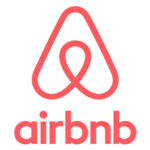
People-to-people platform of Airbnb benefits all its stakeholders, including hosts, guests, employees and the communities in which it operates. According to its CEO, Airbnb is “a more vertically integrated, end-to-end, full-stack ecosystem powered by people.”[1] Generally, Airbnb ecosystem can be divided into two groups: narrow and broad. Narrow Airbnb ecosystem comprises services that directly generate revenues for Airbnb, while broad ecosystem contributes to the development of peer-to-peer lodging, travel and experiences industry in general. Airbnb ecosystem in a narrow level integrates the following types of services: Accommodation Experiences Adventures Restaurants The travel industry disruptor supports stakeholders in its narrow ecosystem in various manners. For example, in a rare event of accidental damage, the property of every Airbnb host is covered up to a million dollars.[2] Airbnb has caused an ecosystem of new start-ups that produce products and services for peer-to-peer lodging industry. This can be specified as broad Airbnb ecosystem and includes a range of products and services. Table below illustrates the most popular types of such services referring to notable examples: Products and services within Airbnb ecosystems Notable examples Cleaning services of properties FlyCleaners: On-Demand Dry-Cleaning App Proply: Full-service cleaning, key delivery, welcome gifts and restocking Porter: laundry, cleaning, restocking Property management for hosts Guesty: responding to guest inquiries, screening potential guests, coordinating key exchange etc. Urban Bellshop: check-in, listing management, cleaning Nest: controlling temperature, Analytics Beyond Pricing: automated pricing suggestions Smart Host: pricing advice Everbooked: pricing suggestions based on a wide range of factors Services within broad Airbnb ecosystem Additional products and services within Airbnb broader ecosystem include automating check-in process, providing keyless entry around the clock, concierge services and welcoming guests and software products such as data presentation and analytics. Moreover, physical products such as toiletries, remote locks, and noise signallers and financing services for Airbnb hosts…
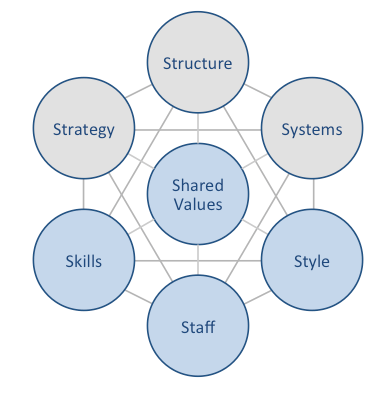
Airbnb McKinsey 7S model illustrates the ways in which seven elements of businesses can be aligned with positive implications on the overall effectiveness of the business. According to this framework strategy, structure and systems are grouped as hard elements, whereas shared values, skills, style and staff are considered soft elements. According to McKinsey 7S model, there are strong links between individual elements. Specifically, a change in one element causes changes in others. As it is illustrated in figure below, shared values are positioned at the core of Airbnb McKinsey 7S model; they guide employee behaviour with implications on their performance. Airbnb McKinsey 7S model Hard Elements in Airbnb McKinsey 7S model Strategy. Airbnb business strategy is associated with platform business model and accordingly, instead of owning the services it offers, the company engages as a broker between suppliers and consumers, receiving a commission of 9% to 15%. Moreover, increasing level of technological integration into various aspects of the business can be specified as one of the critical features of Airbnb business strategy. The global hospitality service brokerage company also places its community and trust among organizational stakeholders at the forefront of its business strategy. Structure. Airbnb organizational structure can be classified as matrix. The workforce is divided into teams of up to 10 people. Importantly, teams support each-other to a great extent. Team leaders and members feel free to ask other teams if they need resources or capabilities. Airbnb organizational structure can be also branded as holocratic, because decision making power is given to teams throughout organization to a great extent and majority of teams are self-managed. The corporate structure of Airbnb is highly dynamic due to rapidly increasing scale of the business worldwide. Systems. Airbnb business operations depend on a wide range of internal systems such as employee recruitment and…
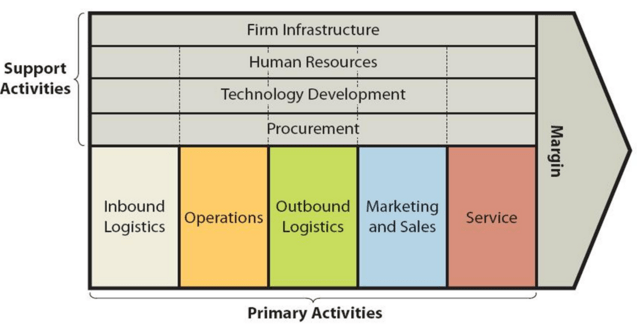
Airbnb value chain analysis is an analytical framework that assists in identifying business activities that can create value and competitive advantage to the global rental and experiences platform. Figure below illustrates the essence of Airbnb value chain analysis. Airbnb Value Chain Analysis Primary Activities in Airbnb Value Chain Analysis Airbnb Inbound logistics In traditional businesses inbound logistics involve receiving and storing raw materials to be used to manufacture products. Inbound logistics is different in service industry in general and online service in particular due to differences between products and services that include inseparability, intangibility, perishability and heterogeneity. From this perspective, Airbnb inbound logistics can be divided into two groups: 1. Inbound logistics related to core services. Core services for the company comprise peer-to-peer listings of accommodation, experiences and adventures. Airbnb inbound logistics for its core services takes a few minutes thanks to purely online nature of its business. Specifically, hosts can list their properties or experience services on the website of the lodging colossus on a matter of a few minutes. Therefore, inbound logistics of each new addition to its website comes for no extra cost for Airbnb. 2. Inbound logistics of resources and items that are used to aid the facilitation of core services. The global hospitality service brokerage company also uses a range of physical resources such as stationary items for its offices. Moreover, products like pillows and mugs, distributed to hosts occasionally to motivate them can also be mentioned as resources acquired by the travel industry disruptor to aid the facilitation of core services. Economies of scale can be specified as the main source of value addition in Airbnb inbound logistics of items that aid in facilitation of core services. Airbnb Operations Generally, operations involve the transformation of raw materials into finished products in manufacturing…
